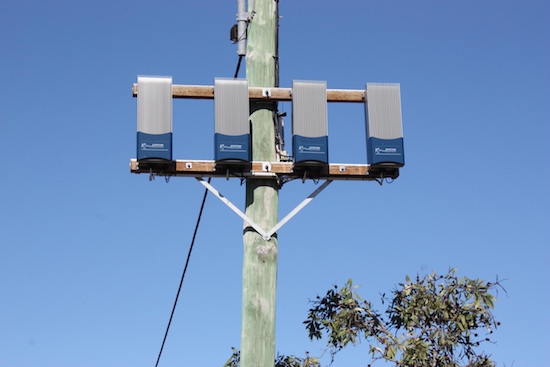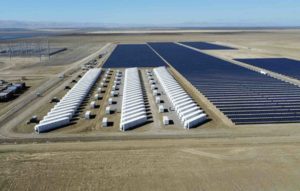UPDATED: Regional Queensland network operator Ergon Energy is taking steps to get ahead of the solar curve, with the roll-out of technology it says will allow more solar power generated on home and business rooftops to be exported to the grid, without disrupting supply.
The technology, which will be provided by a local outfit called Satcom Solutions, is being installed to manage voltage swings on the network – a problem that has long existed for grid operators, but which they argue has been exacerbated by the uptake of rooftop solar.
Exactly what portion of a network’s voltage problems are actually caused by rooftop solar is difficult to pinpoint – but if any network was going to have a problem with it, Ergon would be a contender, with more than 140,000 home and business PV systems connected to its grid.
Traditionally, networks have managed the problem of voltage surges in areas of high solar penetration by “tapping” the voltage at the sub station levels, which has been seen as an inefficiency and costly solution.
At a regulatory level, standards have been imposed that cause solar inverters to switch off at a certain output level, which has been criticised for robbing customers of power and savings, and potentially pushing consumers off the grid.
And in some networks, there are strict restrictions on the overall size of the PV system that households are allowed to install.
The installation of statcoms at a poles and wires level is considered to be an alternative approach to regulating voltage that is more efficient and consumer friendly – although according to a number of experts RE reached out to, it is not necessarily the best or most economic one.
Addressing the problem at a household level, both with smart inverter technology and increased self-consumption using battery storage, are also viable options.
Nonetheless, the expert opinion was unanimous in saying that Ergon – which appears to have been doing its homework on the issue – should be applauded for “getting ahead of the issue” and moving beyond the sub-station to do so.
In a statement on Monday, Ergon said the voltage stabilising technology – or low voltage static synchronous compensators, or “statcoms” – had already been installed in Mossman, and would continue to be rolled out to other parts of the network.
The project has been estimated to cost $2.8 million, which will cover the cost of embedding the LV statcom technology across the Ergon Energy and Energex networks.
“Statcoms regulate the voltage on sections of the network where they are installed, enabling more households to feed solar power into the grid and managing peak load voltages also,” said Ergon’s manager of intelligent grid and new technology, Michelle Taylor.
“While statcoms are not a new concept, Ergon’s innovative application of the technology uses small-scale statcom devices to help manage the low-voltage network.
“Ergon’s technology innovation engineers successfully delivered a proof of concept for the statcom equipment in 2014 and successfully trialled test versions of the technology in 2015. This device can now be a new tool in the tool-box for solving network issues,” Taylor said.
RenewEconomy asked Ergon on Monday how much the roll-out was costing the newtork operator, and whether other – perhaps cheaper – alternatives had been, or were being considered.
Here’s the network’s emailed response:
“Ergon Energy considers Statcoms as another tool for responding to rising voltages …They may not always be the most economic response in every situation, but they can be cost-effective in carefully targeted locations.
“…As with all network investments, we consider a broad range of solutions including traditional network upgrades (for example line and transformer upgrades) and non-network alternatives (for example phase balancing, transformer tapping, customer inverter changes and low voltage regulators).
“These solutions are assessed in terms of their benefit and overall value to customers and the network (their net present values) and solution that provides the greatest benefit is chosen.
“For this reason, although we’re deploying LV statcoms through this project, LV statcoms won’t always be the ideal solution to resolve network constraints,” Ergon said.
“At this stage batteries are not viewed as a cost effective solution but we continue to watch this emerging opportunity.
“As batteries become more affordable, the voluntary uptake of battery storage, particularly when coupled with rooftop solar, is a good thing for the network and our customers.
“In some instances it will help reduce the need for network investment and ensure that the energy generated by rooftop solar is used closer to the point of generation.
“Does it undermine the need for investment in these technologies? No. The continuing shift toward distributed energy resources like rooftop solar and batteries will place greater onus on the need for a flexible distribution network.
“Solutions like LV statcoms will help to provide this flexibility on the low voltage network and help to manage constraints as close as possible to their source.”
This article was originally published on RenewEconomy’s sister site, One Step Off The Grid, which focuses on customer experience with distributed generation. To sign up to One Step’s free weekly newsletter, please click here.









